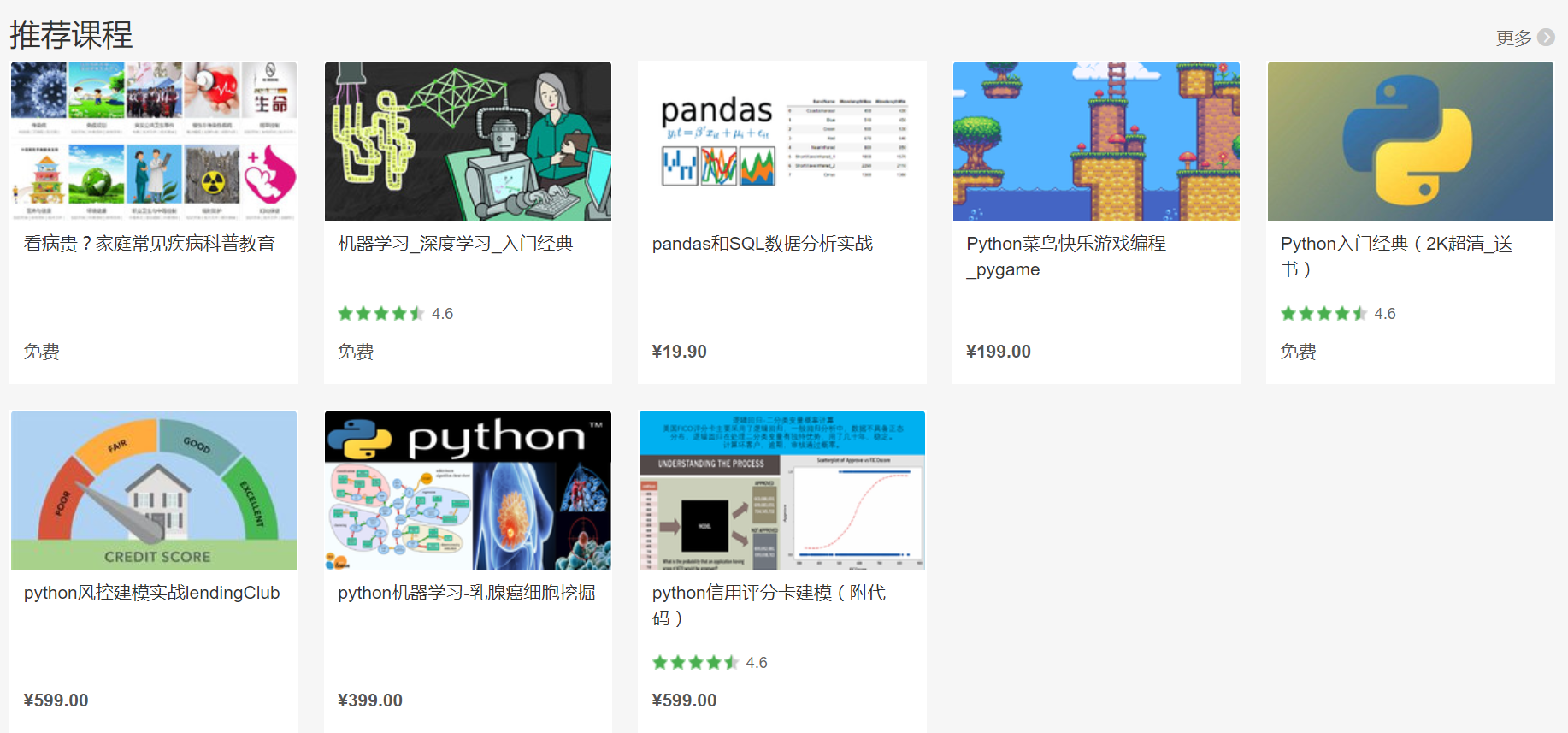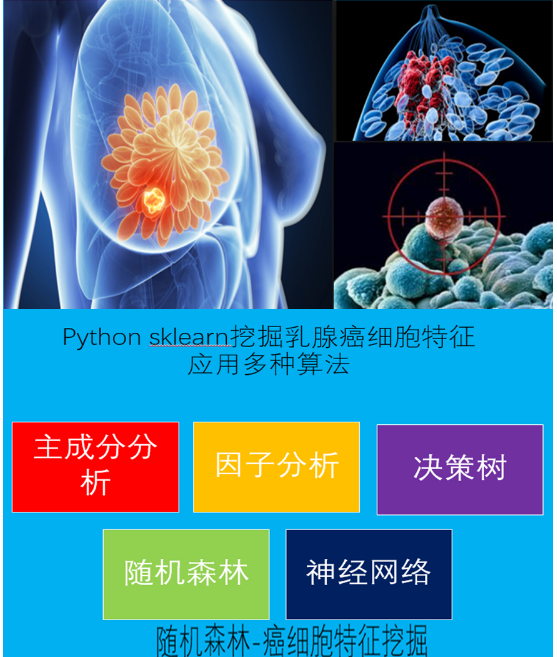nltk_29_pickle保存和导入分类器
python机器学习-乳腺癌细胞挖掘(博主亲自录制视频)https://study.163.com/course/introduction.htm?courseId=1005269003&utm_campaign=commission&utm_source=cp-400000000398149&utm_medium=share
pickle用于持久化保存数据,分类器生成需要消耗大量时间,避免以后重复消耗时间
import pickle
#保存分类器
save_classifier = open("naivebayes.pickle","wb")
pickle.dump(classifier, save_classifier)
save_classifier.close()
#导入分类器
classifier_f = open("naivebayes.pickle", "rb")
classifier = pickle.load(classifier_f)
classifier_f.close()
Training classifiers and machine learning algorithms can take a very long time, especially if you're training against a larger data set. Ours is actually pretty small. Can you imagine having to train the classifier every time you wanted to fire it up and use it? What horror! Instead, what we can do is use the Pickle module to go ahead and serialize our classifier object, so that all we need to do is load that file in real quick.
So, how do we do this? The first step is to save the object. To do this, first you need to import pickle at the top of your script, then, after you have trained with .train() the classifier, you can then call the following lines:
This opens up a pickle file, preparing to write in bytes some data. Then, we use pickle.dump() to dump the data. The first parameter to pickle.dump() is what are you dumping, the second parameter is where are you dumping it.
After that, we close the file as we're supposed to, and that is that, we now have a pickled, or serialized, object saved in our script's directory!
Next, how would we go about opening and using this classifier? The .pickle file is a serialized object, all we need to do now is read it into memory, which will be about as quick as reading any other ordinary file. To do this:
Here, we do a very similar process. We open the file to read as bytes. Then, we use pickle.load() to load the file, and we save the data to the classifier variable. Then we close the file, and that is that. We now have the same classifier object as before!
Now, we can use this object, and we no longer need to train our classifier every time we wanted to use it to classify.
While this is all fine and dandy, we're probably not too content with the 60-75% accuracy we're getting. What about other classifiers? Turns out, there are many classifiers, but we need the scikit-learn (sklearn) module. Luckily for us, the people at NLTK recognized the value of incorporating the sklearn module into NLTK, and they have built us a little API to do it. That's what we'll be doing in the next tutorial.
把documents,word_features,classifier三个数据保存,以免以后做大量重复时间消耗
# -*- coding: utf-8 -*-
"""
Created on Thu Jan 12 10:44:19 2017 @author: Administrator 用于短评论分析-- Twitter 保存后的"positive.txt","negative.txt"需要转码为utf-8
在线转码网址
http://www.esk365.com/tools/GB2312-UTF8.asp features=5000,准确率百分之60以上
features=10000,准确率百分之 以上 运行时间可能长达一个小时
""" import nltk
import random
import pickle
from nltk.tokenize import word_tokenize
import time time1=time.time()
short_pos = open("positive.txt","r").read()
short_neg = open("negative.txt","r").read() # move this up here
documents = []
all_words = [] for r in short_pos.split('\n'):
documents.append( (r, "pos") ) for r in short_neg.split('\n'):
documents.append( (r, "neg") ) # j is adject, r is adverb, and v is verb
#allowed_word_types = ["J","R","V"] 允许形容词类别
allowed_word_types = ["J"] for p in short_pos.split('\n'):
documents.append( (p, "pos") )
words = word_tokenize(p)
pos = nltk.pos_tag(words)
for w in pos:
if w[1][0] in allowed_word_types:
all_words.append(w[0].lower()) for p in short_neg.split('\n'):
documents.append( (p, "neg") )
words = word_tokenize(p)
pos = nltk.pos_tag(words)
for w in pos:
if w[1][0] in allowed_word_types:
all_words.append(w[0].lower()) #保存文档
save_documents = open("documents.pickle","wb")
pickle.dump(documents, save_documents)
save_documents.close() #时间测试
time2=time.time()
print("time1 consuming:",time2-time1)
#保存特征
all_words = nltk.FreqDist(all_words)
#最好改成2万以上
word_features = list(all_words.keys())[:5000]
save_word_features = open("word_features5k.pickle","wb")
pickle.dump(word_features, save_word_features)
save_word_features.close() def find_features(document):
words = word_tokenize(document)
features = {}
for w in word_features:
features[w] = (w in words) return features featuresets = [(find_features(rev), category) for (rev, category) in documents] random.shuffle(featuresets)
print(len(featuresets)) testing_set = featuresets[10000:]
training_set = featuresets[:10000] classifier = nltk.NaiveBayesClassifier.train(training_set)
print("Original Naive Bayes Algo accuracy percent:", (nltk.classify.accuracy(classifier, testing_set))*100)
classifier.show_most_informative_features(15) #保存分类器
save_classifier = open("originalnaivebayes5k.pickle","wb")
pickle.dump(classifier, save_classifier)
save_classifier.close() time3=time.time()
print("time2 consuming:",time3-time2)
https://study.163.com/provider/400000000398149/index.htm?share=2&shareId=400000000398149(博主视频教学主页)

nltk_29_pickle保存和导入分类器的更多相关文章
- matlab学习(3) 保存和导入工作区
1.保存和导入工作区变量mat文件 假如创建了两个矩阵A=[1,2;3,4],B=[0,1;1,0] 则工作区就是这样的: 当函数有一个数据量非常大的返回值时,每次调用函数都要执行一遍函数,每次都要等 ...
- VS做简历的第三天(将文件中的样式保存并且导入)
VS做简历的第三天(将文件中的样式保存并且导入) 1.先在文件栏新建一个CSS文件 如 2.将第二天如下代码,删除<stype></stype>保留中间部分,复制在CSS文件并 ...
- docker 镜像的保存以及导入
docker 镜像的保存 docker save -o davename.tar images docker 镜像的导入 docker import - importname < tar ...
- TensorFlow 模型保存和导入、加载
在TensorFlow中,保存模型与加载模型所用到的是tf.train.Saver()这个类.我们一般的想法就是,保存模型之后,在另外的文件中重新将模型导入,我可以利用模型中的operation和va ...
- (qsf文件 、 tcl文件 和 csv(txt)文件的区别) FPGA管脚分配文件保存、导入导出方法
FPGA管脚分配文件保存方法 使用别人的工程时,有时找不到他的管脚文件,但可以把他已经绑定好的管脚保存下来,输出到文件里. 方法一: 查看引脚绑定情况,quartus -> assignment ...
- scikit_learn,NLTK导入分类器相关流程命令
- SecureCRT配置文件保存和导入
每次重装系统,都要重新配置SecureCRT,为了减少重复工作.直接在SecureCRT软件中找到:选项---全局选项---常规---配置文件夹下面路径:C:\Users\Administrator\ ...
- auto-keras 测试保存导入模型
# coding:utf-8 import time import matplotlib.pyplot as plt from autokeras import ImageClassifier# 保存 ...
- 多个Excel文件快速导入到DB里面
1 . 文件比较多,需要把这么多的数据都导入到DB里面,一个个导入太慢了,能想到的是先把数据整个到一个Excel中,然后再导入 2. 第一步准备合并Excel,新建一个新的excel,命名为total ...
随机推荐
- 今日事——Sprint计划会议
一. Sprint需求: 解屏提醒部分 界面设计 登录功能 备忘功能 成就系统 二.工作认领: 因有成员请假回家,所以延后认领,目前主要任务是学习如何在andriod平台开发并搭建开发环境. 网上 ...
- matconvnet编译
1.安装matconvnet 网上教程很多 2.编译 cd matconvnet/ addpath matlab/ vl_compilenn('enableGpu',true,'cudaRoot',' ...
- HDU 2159 FATE 完全背包
题目链接: http://acm.hdu.edu.cn/showproblem.php?pid=2159 FATE Time Limit: 2000/1000 MS (Java/Others)Memo ...
- POJ2823(单调队列方法解题)
因为不太好复制,我就直接截图了,题目链接:题目大致的意思是:给一串数字,然后要你求出每k长度的连续子序列中的最大值以及最小值并输出:这题就是一个最简单的运用单调队列方法解题的例子. 解题思路:通过单调 ...
- [2017BUAA软工]第3次个人作业
软工第3次个人作业--案例分析 一. 调研,评测 1.软件的bug(至少两个,不少于40字) 测试软件: 必应词典移动端 测试平台:iPhone 6 bug1 对于翻译功能中的图片翻译功能,必应词典是 ...
- excel文件怎么使用php进行处理
1.可以通过phpmyadmin导入csv文件 2.也可以直接使用php 处理已经将excel另存为.csv后缀的文件, 通过php专门处理csv文件的函数 如 fgetcsv() <?php ...
- [转帖]紧急预警:Globelmposter3.0变种来袭,多行业中招
紧急预警:Globelmposter3.0变种来袭,多行业中招 https://www.csdn.net/article/a/2018-09-04/15959658 CSDN 转载深信服... ...
- p2 弹簧
P2中用来约束刚体运动的还有弹簧Spring. 弹簧除约束两个刚体之间的运动轨迹外,通过damping阻尼和stiffness刚度系数等属性,使得刚体在向目标移动时, 出现类似弹簧的简谐运动.Spri ...
- css中对position的几种定位方式的最佳诠释
关于元素的position定位的理解,牛客网的hardy给出了一个比较好的理解: 在html中网页可以看成一个立体的空间,一个完整的页面是由很多个页面堆积形成的,如上图所示 CSS中Positio ...
- Windows下CURL扩展无效之终极解决办法。
本地开发环境使用WAMP快速搭建,在使用PHP的CURL时可能会存在无法载入情况,这里提供终极解决方法. 1.在php.ini配置文件中启用 php_curll.dll 扩展: (环境已经自动附带 l ...

